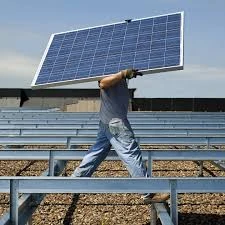Current Pricing Trends for 480W Solar Panels and Market Insights
Understanding the Price of 480W Solar Panels A Comprehensive Overview
In recent years, the demand for solar energy has surged, driven by the need for sustainable and renewable energy sources. Among various solar panel options, the 480W solar panel has gained significant attention for its powerful output and efficiency. This article will delve into the factors influencing the price of 480W solar panels, their applications, and how they compare to other panels on the market.
What is a 480W Solar Panel?
A 480W solar panel is designed to convert sunlight into electricity, producing a maximum output of 480 watts under ideal conditions. These panels are commonly constructed with monocrystalline or polycrystalline silicon cells, with monocrystalline typically offering higher efficiency and performance. The higher wattage output means that fewer panels are needed to achieve the desired energy production, making the 480W model an attractive option for both residential and commercial applications.
Factors Affecting the Price of 480W Solar Panels
1. Type of Technology The technology used in manufacturing solar panels plays a crucial role in pricing. Monocrystalline panels are generally more efficient and more expensive than polycrystalline ones. Therefore, a 480W monocrystalline solar panel may have a higher price tag compared to its polycrystalline counterpart.
2. Brand and Quality The brand reputation also affects the cost. Established brands with a history of reliability and quality, such as Canadian Solar, Trina Solar, and LG, may command higher prices. Investing in a reputable brand can ensure longevity and performance reliability.
3. Market Trends Solar panel prices are subject to market trends and supply chain factors. The global demand for solar energy and the availability of raw materials can lead to fluctuations in pricing. When demand increases, prices may rise, whereas technological advancements and economies of scale can lead to price reductions.
4. Installation and Labor Costs The installation of solar panels adds to the total cost. Labor costs can vary depending on the complexity of the installation, local regulations, and the experience of the installer. It is essential to factor in these costs when calculating the overall investment in solar energy.
5. Government Incentives Many governments offer incentives, rebates, and tax credits for solar panel installations, which can significantly reduce the overall cost. These programs encourage the adoption of renewable energy sources and can make the initial investment more favorable.
480w solar panel price

Price Range of 480W Solar Panels
As of 2023, the price of 480W solar panels typically ranges from $200 to $400 per panel, depending on the factors mentioned above. This price is for the panels alone; the total system cost will include additional components such as inverters, mounting equipment, and installation.
To put this into perspective, a small residential solar installation using just four 480W panels for a total output of 1920 watts could cost around $800 to $1600 for the panels alone. When considering installation and other components, the complete system could range anywhere from $3,000 to $10,000 or more, depending on specific circumstances and choices made.
Advantages of 480W Solar Panels
Investing in 480W solar panels has several advantages
1. Higher Output With more power generated per panel, homeowners and businesses can benefit from quicker returns on investment as they reduce dependency on grid power.
2. Space Efficiency 480W panels allow for maximum energy generation in limited rooftop space, making them ideal for urban environments where space is at a premium.
3. Scalability These panels can easily be integrated into both small and large systems, allowing for scalability depending on energy needs.
Conclusion
The 480W solar panel represents an excellent choice for those looking to harness solar energy's power efficiently. While the cost may initially seem high, the long-term savings on energy bills, combined with government incentives and advances in solar technology, make it a worthwhile investment. As solar technology continues to evolve and improve, the prices may become even more accessible, bringing renewable energy to a broader audience and contributing to a sustainable future. When considering solar energy, it’s essential to do thorough research, compare products, and consult with professionals to find the best solutions tailored to specific needs.
-
String Solar Inverter: The High-Efficiency Solution for Smart Solar EnergyNewsJul.14,2025
-
Revolutionizing Rooftop Energy with the Power of the Micro Solar InverterNewsJul.14,2025
-
Power Independence with Smart Off Grid Solar Inverter SolutionsNewsJul.14,2025
-
On Grid Solar Inverter: Powering the Future with Smart Grid IntegrationNewsJul.14,2025
-
Monocrystalline Solar Panels: High-Efficiency Power for the Future of Clean EnergyNewsJul.14,2025
-
Bifacial Solar Panel: A Smarter Investment for Next-Generation Energy SystemsNewsJul.14,2025







